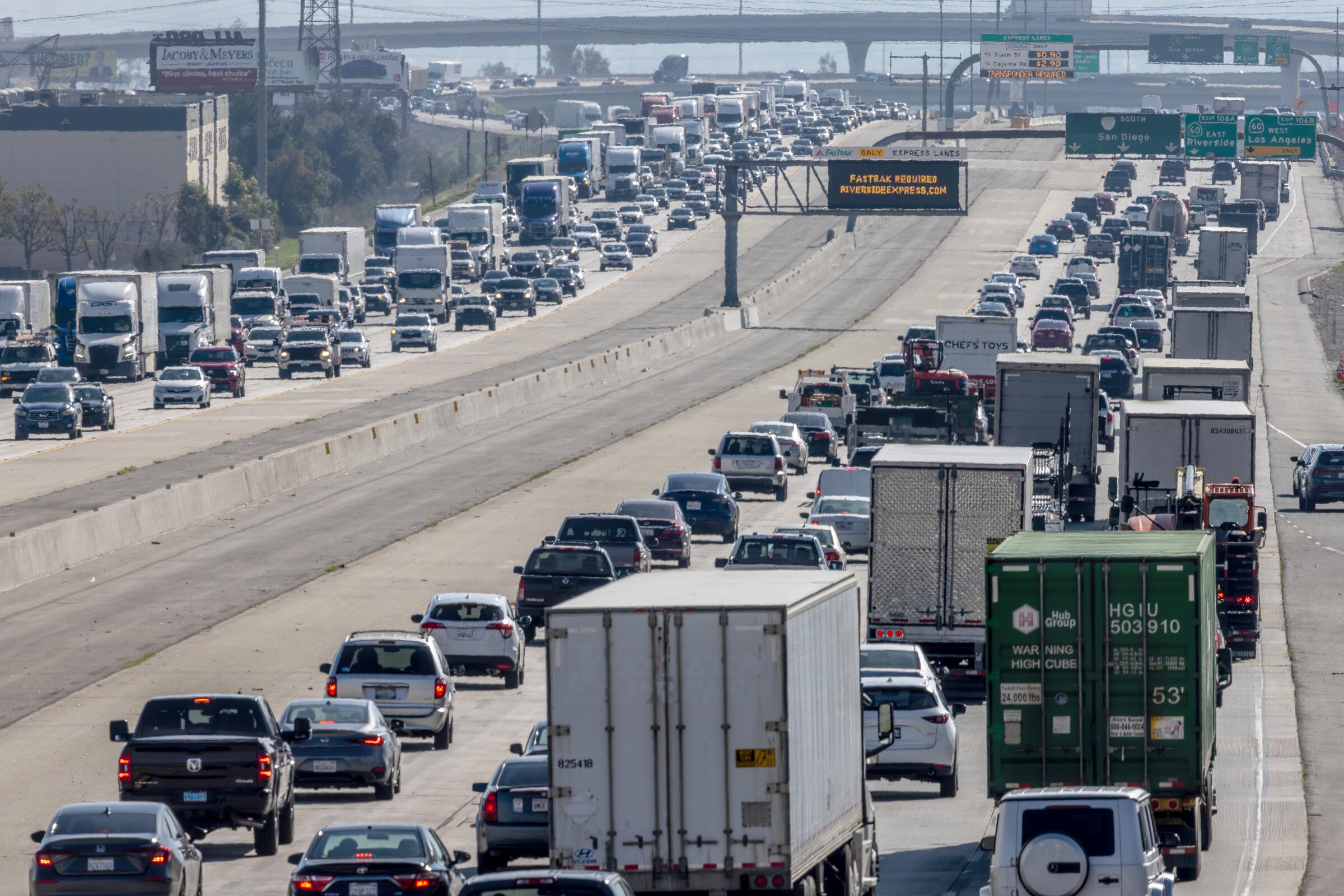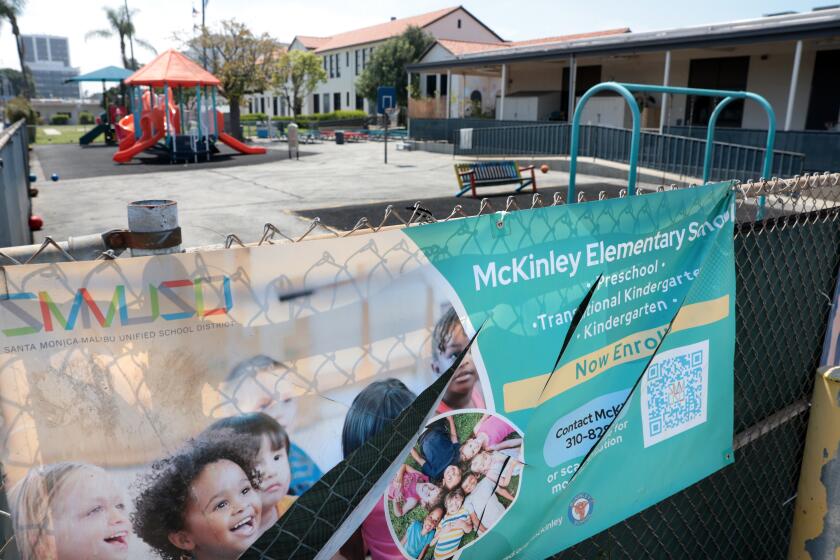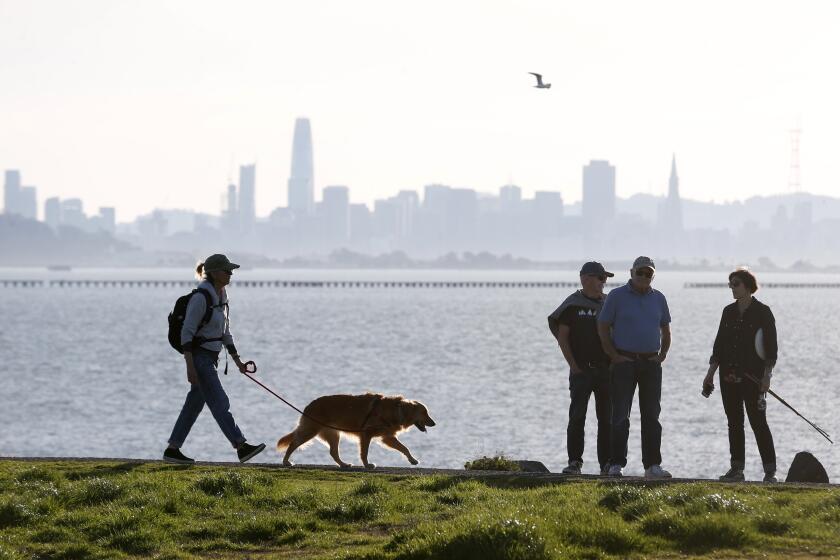Tony Briscoe is an environmental reporter with the Los Angeles Times. His coverage focuses on the intersection of air quality and environmental health. Prior to joining The Times, Briscoe was an investigative reporter for ProPublica in Chicago and an environmental beat reporter at the Chicago Tribune.
1
Despite California’s reputation for groundbreaking clean-air rules, Greater Los Angeles is the smoggiest region in the nation — a dubious title it has earned in 24 out of 25 reports from the American Lung Assn. And the streak continues, as several Southland counties earned F grades for the 25th consecutive time from the group, which released its latest report Wednesday.
Since the turn of the century, Southern California air regulators have drastically diminished the dense clouds of lung-searing pollution that once hung over the region.
Between 1996 and 1998, Greater Los Angeles experienced around 230 days when ozone (a major component of smog) exceeded federal health standards. With well over 1 million electric vehicles on California roads and massive installations of renewable energy, the region saw 55 fewer unhealthy smog days on average between 2020 and 2022, the American Lung Assn. said in its 25th annual “State of the Air” report.
“Overall, the nation has made dramatic progress in reducing air pollution,” said Laura Kate Bender, an executive with the American Lung Assn. “Measures to clean up vehicles, power plants and other industry — led, in many cases, by California — [have] made major progress. But 25 years later, there are still far too many people living with unhealthy air.”
Nationwide, more than 100 million people live in counties with unhealthy levels of ozone, one of the most prevalent forms of air pollution. That includes the roughly 18 million residents of Los Angeles, Orange, Riverside and San Bernardino counties — none of which have ever received better than an F grade from the American Lung Assn. for unhealthy levels of ozone.
The new report highlights some of the most challenging years for environmental regulators, who grappled with a pandemic-related boost in e-commerce, record-setting heatwaves and historic wildfires.
Environmental advocates say the findings come at a pivotal point that will determine the trajectory of the region’s air quality. In 2024, regulators are poised to decide on a large slate of environmental rules, although the state budget deficit may jeopardize some funding. Meanwhile, the November general election will come with ballot measures and candidates that will shape environmental policies.
Southern California has had issues with smog since the mass adoption of the automobile. The region’s numerous cars and trucks release a vast amount of vehicle exhaust, which forms smog when it’s cooked in the perennially sunny climate. The mountain ranges restrict airflow and prevent the pollution from dispersing.
State and local regulators have adopted a number of nation-leading rules to reduce emissions from vehicles and industrial facilities.
Although electric vehicles and cleaner car engines have significantly reduced pollution, transportation remains the largest source in California’s large cities. Heavy-duty trucks, cargo ships and trains are some of the biggest contributors to regional pollution.
McKinley Elementary has designs to modernize its campus. But plans are being delayed, and costs are rising since dangerous vapors were found in the soil.
San Bernardino, a bastion of warehouses and semi-trucks serving movement of the region’s goods, had nearly six months of unhealthy smog days — by far more than any other county in the nation.
“A major increase in the approval of warehouses and the growth in the logistics industry has essentially invited tens of thousands of new daily truck trips to the region,” said Will Barrett, a senior director for the American Lung Assn.
California air regulators are waiting on the Biden administration to sign off on two rules that would phase out heavy-duty trucks and trains that burn fossil fuels.
The South Coast Air Quality Management District is expected to discuss new rules intended to reduce pollution from Southern California’s railyards and ports. The San Pedro-Long Beach ports complex is the largest fixed source of smog-forming pollution.
Environmental advocates are also ginning up support to uphold California’s law that prevents new oil and gas drilling near homes and schools, the subject of a contentious and expensive ballot referendum in November. These wells also can release harmful pollutants that worsen smog.
Toward a more sustainable California
Get Boiling Point, our newsletter exploring climate change, energy and the environment, and become part of the conversation — and the solution.
You may occasionally receive promotional content from the Los Angeles Times.
As regulators continue to search for answers, Dr. Afif El-Hasan, a pediatric physician in Orange County, continues to worry for the 3 million children who live in Southern California and are subjected to polluted air. He is well aware of how smog and other air pollution can inflame lungs, triggering asthma attacks and stunting development.
Heightening concerns, smog levels are at their highest in the summer, when many children are out of school and want to spend time outdoors.
“It’s a reminder to me that there are many ways to take away the quality of a childhood,” El-Hasan said. “I am constantly faced with the challenge of finding a balance between making sure that children are able to exercise and spend time outdoors while doing so in a manner that keeps their lungs and upper airways from being damaged in the process.”
Environmental regulators have found explosive levels of methane in a popular Berkeley park. Regulators and the city are sparring over the source of the gas and what to do about it.







